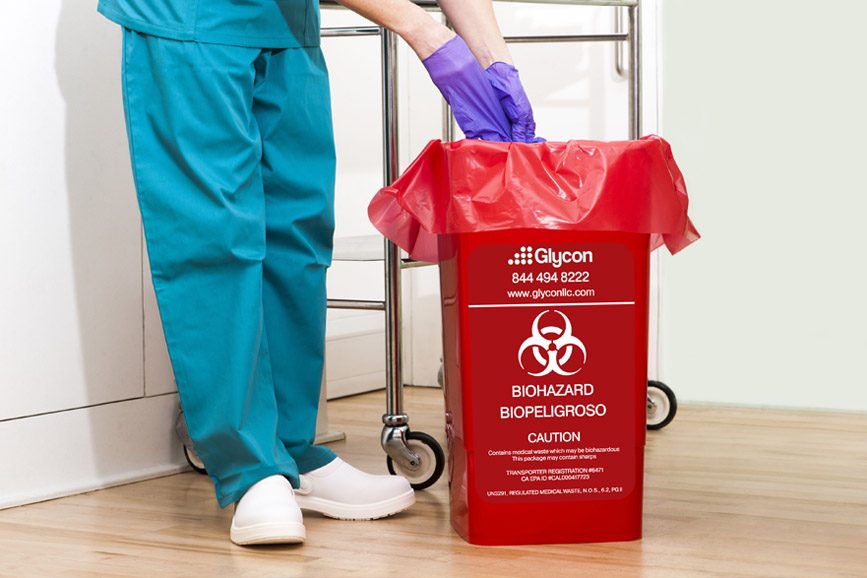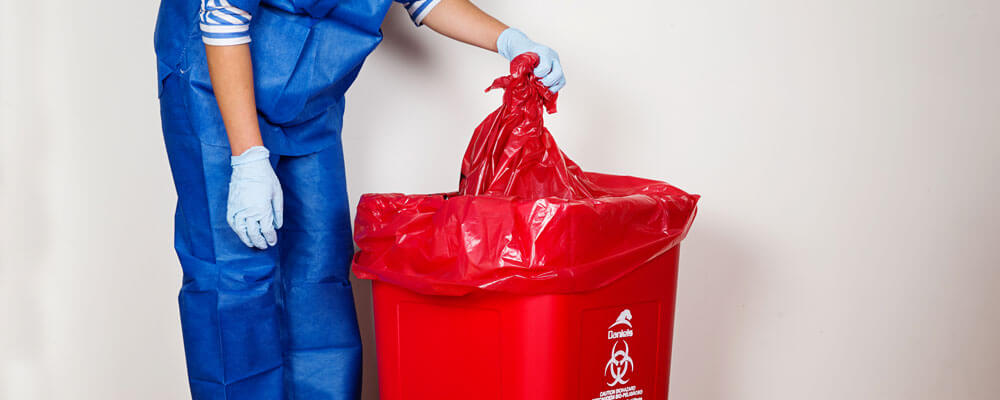Guardians of Tidiness: Resident Medical Waste Removal Service for Your Satisfaction
Wiki Article
Remain Ahead of Rules: Specialist Advice on Medical Waste Disposal
In a world where the medical care sector is continuously evolving, it is vital for medical centers to stay in advance of guidelines when it comes to the appropriate disposal of medical waste. From recognizing the various classifications of clinical waste to carrying out the right collection and partition techniques, this discussion will certainly provide actionable ideas and important understandings to help centers stay in advance of regulations in the ever-changing landscape of clinical waste disposal.Understanding Clinical Waste Categories
Understanding clinical waste groups is essential for appropriate disposal and administration in health care centers. Medical waste describes any kind of waste produced by medical care activities that might pose a risk to public wellness or the environment. It is critical to categorize clinical waste properly to ensure its risk-free handling, treatment, transportation, and disposal.There are a number of groups of medical waste that health care centers require to be knowledgeable about. The most common groups consist of infectious waste, pathological waste, sharps waste, pharmaceutical waste, and chemical waste. Each classification has certain standards and regulations for its appropriate administration and disposal.
Pathological waste refers to human tissues, organs, or body parts that need unique handling and disposal. Drug waste consists of run out, extra, or polluted medications that need cautious handling and disposal.
Staying Up-To-Date With Regulatory Changes
Remaining existing with governing modifications is crucial for medical care centers to ensure conformity and correct administration of medical waste disposal. medical waste removal near me. With regulations constantly evolving, it is essential for medical care centers to remain updated to prevent fines, penalties, and potential injury to the atmosphere and public healthTo remain ahead of governing modifications, healthcare centers ought to develop a system for tracking and monitoring updates. This can be done by signing up for regulatory e-newsletters, attending meetings and workshops, and proactively taking part in sector associations. Furthermore, facilities must designate an employee or team in charge of staying notified and disseminating details to appropriate stakeholders.
Normal communication with regulative firms is likewise vital. Healthcare centers should establish partnerships with local, state, and federal firms to ensure they know any kind of changes in guidelines that might impact their waste administration techniques. This can be done through routine conferences, engagement in public comment periods, and positive involvement with regulatory agencies.
Additionally, healthcare centers should take into consideration partnering with waste management firms that specialize in clinical waste disposal (medical waste disposal services with WasteX). These companies are typically skilled in the most recent policies and can offer support and assistance to ensure compliance
Implementing Appropriate Collection and Segregation Methods
To successfully take care of clinical garbage disposal, medical care centers need to develop appropriate collection and segregation techniques based on regulative guidelines. Executing these techniques guarantees the safe handling and disposal of potentially hazardous materials, shields the setting, and decreases the threat of injuries and infections to health care workers and the general public.
Proper collection and partition approaches entail using assigned containers and identifying systems. Medical care centers need to supply clearly labeled containers for various sorts of clinical waste, such as sharps, infectious waste, pharmaceutical waste, and non-hazardous waste. These containers should be color-coded and plainly marked to avoid complication and advertise easy recognition.
Furthermore, health care facilities must train their staff on the proper treatments for collecting and segregating clinical waste. This includes enlightening them on the different types of waste, the proper containers to utilize, and the significance of adhering to laws and guidelines. Normal training sessions and correspondence course need to be performed to guarantee that staff participants remain updated on best techniques.
Additionally, medical care facilities need to establish a system for normal collection and disposal of medical waste. This might involve partnering with accredited waste management business that specialize in medical garbage disposal. These companies will certainly make certain that the collected waste is transferred and taken care of in compliance with regulative needs.
Selecting the Right Disposal Approaches

Incineration is among one of the most reliable and usual approaches for getting rid of particular kinds of clinical waste, such as pathological waste and sharps. It includes the regulated combustion of waste at high temperature levels, minimizing it to ash. Incineration can release damaging contaminants into the air and contribute to air contamination.

Various other disposal techniques consist of chemical treatment, microwave therapy, and landfilling. Chemical treatment entails the use of chemicals to decontaminate and reduce the effects of the waste. Extra resources Microwave treatment utilizes microwave power to warm and decontaminate the waste. Landfilling includes hiding the waste in a designated land fill area (medical waste disposal services with WasteX). Landfilling ought to be the last resort due to the possible threat of contamination to dirt and groundwater.
Ensuring Compliance Through Documentation and Training
After carefully considering the suitable disposal methods for medical waste, healthcare centers have to make certain conformity with laws and decrease ecological effect by executing effective documentation and training treatments. This action is vital in preserving a sustainable and secure setting for both health care workers and the public.
Training is just as important in making certain conformity with policies. Medical care workers that manage clinical waste needs to receive ideal training on waste partition, dealing with, and disposal treatments. This training needs to cover subjects such as the proper usage of personal protective devices, recognition of various sorts of waste, and the right disposal techniques for every waste category. By giving comprehensive training, health care facilities can equip their team to make informed choices and lessen the threat of improper garbage disposal.
Conclusion
Finally, remaining ahead of Continue policies in medical waste disposal is essential for health care facilities. medical waste removal services. Understanding the various classifications of clinical waste, remaining upgraded with regulatory adjustments, implementing appropriate collection and segregation approaches, selecting the suitable disposal approaches, and ensuring conformity with documentation and training are all vital actions. By adhering to these guidelines, healthcare organizations can properly get rid of and handle of clinical waste in a risk-free and responsible wayFrom comprehending the different classifications of medical waste to applying the best collection and segregation approaches, this discussion will certainly offer valuable understandings and actionable ideas to assist centers stay in advance of regulations in the ever-changing landscape of medical waste disposal. - medical waste disposal services with WasteX
The most common groups consist of infectious waste, pathological waste, sharps waste, pharmaceutical waste, and chemical waste. Health care facilities ought to offer plainly classified containers for various kinds of clinical waste, such as sharps, transmittable waste, pharmaceutical waste, and non-hazardous waste. Health care centers need to develop a comprehensive system to record and track all aspects of medical waste disposal, including types of waste produced, amounts, and disposal techniques utilized. Health care workers who deal with medical waste must obtain suitable training on waste partition, managing, and disposal procedures.
Report this wiki page